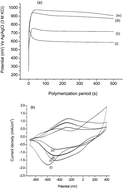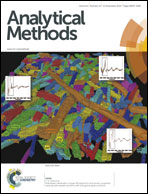Improved potentiometric glucose detection with ultra-thin polypyrrole-glucose oxidase films
Abstract
The electrochemical and morphological characterization of ultra-thin PPy-GOx films formed in the absence of a supporting electrolyte has been undertaken to gain a better understanding of its improved potentiometric response for glucose and to ascertain the extent to which the sensitivity can be further improved. Results obtained by scanning electron microscopy (SEM) and chronopotentiometry revealed that, at higher GOx concentrations, the amount of enzyme entrapped into PPy films increased and, consequently, resulted in improved conductivity. Variations in the apparent activity which correlated with the changes in the conductivity of the PPy-GOx films were also observed. Details of the GOx tertiary structure that influences its biosensing properties were also evident from the morphology observed by SEM. From the understanding of the influence of GOx entrapment on the morphology and conductivity of the PPy films, new experimental conditions for the fabrication of PPy-GOx biosensor for ultrasensitive detection of glucose were established. The resulting biosensor enabled detection of as little as 6.0 μM glucose and achieved a wide linear concentration range from 6.0 μM to 40 mM with a sensitivity of 77 mV per decade. The biosensor was used for at least ten consecutive measurements without any significant loss in sensitivity and its repeated use for 2 months did not result in any significant loss in sensitivity.


 Please wait while we load your content...
Please wait while we load your content...